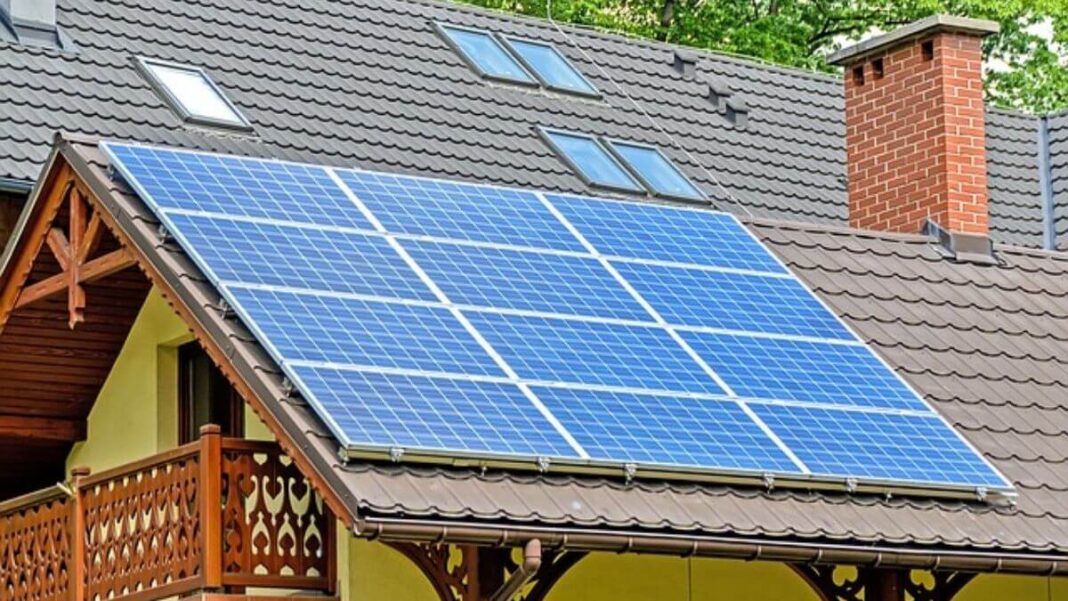Solar energy is becoming more popular as the pressure to combat climate change increases. This is because electricity makes up a large percentage of carbon emissions since we burn fossil fuels to produce it. In addition, the manufacturing and usage of solar panels release carbon dioxide at an exponentially lower rate than traditional energy, making them favorable among eco-friendly families.
Solar is the perfect way to go if you strive to live a green life but don’t know where to start. But how exactly does solar energy reduce your carbon footprint? And what makes it worth the investment? Continue reading to learn the basics of solar power and its effects on the environment and your carbon footprint.
What are Greenhouse Gasses?
Greenhouse gasses capture heat in the atmosphere, which causes the planet’s overall temperature to rise. This causes climate change, and it poses a dire threat to humanity. The leading gasses that scientists focus on reducing are carbon dioxide and methane since they make up the most significant portion of the problem.
Activities that produce the most greenhouse gasses include transportation, electricity, and manufacturing. But, of course, none of those are going away, so we’ve had to figure out energy-efficient solutions that will lower our negative impact on the environment.
Your Carbon Footprint
Your carbon footprint is a measurement of greenhouse gasses emitted. Nearly every one of your daily actions affects your impact on the environment, so it’s essential to be mindful. When you calculate your carbon footprint, you’ll see the changes that need to be made and track your progress as you continue on your journey to clean living.
Switching to solar energy is an essential step in reducing your carbon emissions. But there are other changes you can implement as well. For example, you could choose to walk or bike to places nearby instead of driving. You could also consider public transportation when you need to travel long distances.
How Solar Reduces your Carbon Footprint
Although solar energy contributes to carbon emissions, the levels are significantly lower than any other energy source. So by switching, you’re choosing the option with the lowest negative impact on the atmosphere. This is because you’re becoming less reliant on the power grid when you utilize the sun’s energy to power your home. But if you’re unsure whether solar power is worth the cost, you could consider starting with a few panels. Then, when you’re comfortable with the results, you can have more installed.
What Makes up Solar Panels?
Solar panels are primarily made from silicon. Materials such as glass and metal are involved but are not the main “ingredient” per se. The metal makes up the frame, and glass protects the solar cells. The process of creating power is pretty simple. Each solar cell absorbs energy from the sun and transmits it to electrical power using photovoltaics.
Many argue that the manufacturing of solar panels emits heavy levels of greenhouse gasses by itself. However, the amount of carbon dioxide released is still tiny compared to fossil fuels. So that argument is constantly debunked.
What is Carbon Debt?
First, you have a carbon footprint, and now you find out you have a carbon debt. It’s not as complex as it seems. Your carbon debt is the disproportion between your carbon footprint and your efforts to reduce emissions.
For example, when you purchase your solar panels, you automatically have increased carbon debt because of the carbon dioxide released during manufacturing. However, as you continue to use them, your debt decreases and balances out, making you carbon neutral. This neutrality is the end goal for all of your reduction efforts.
Benefits of Solar Energy
Solar energy doesn’t just lower your carbon footprint. Installing solar panels also saves you loads of money in the long run. For instance, your utility bills will significantly drop when you become less reliant on the power grid. Additionally, you won’t have to worry about crazy fluctuations in your statements during the winter and summer months.
That’s not the only way you’ll save money by using solar, though. Uncle Sam is all for clean energy, so there are tax incentives for switching. However, these deductions won’t last forever since solar power will become the primary energy source in the future. So you should jump on them while you can.
Reducing your carbon footprint may seem like a life-changing task, but it all boils down to small changes made in your daily routine. It’s not that difficult like many make it out to be, and many of the changes are hardly noticeable. For example, using solar panels requires no effort on your part, and you would be dramatically reducing your carbon footprint by installing them.
Although many argue that solar panels require a lot of energy to create, scientists have proved that they are still less of a threat to the atmosphere than any other power source. So it’s worth the investment, especially in the long run.

